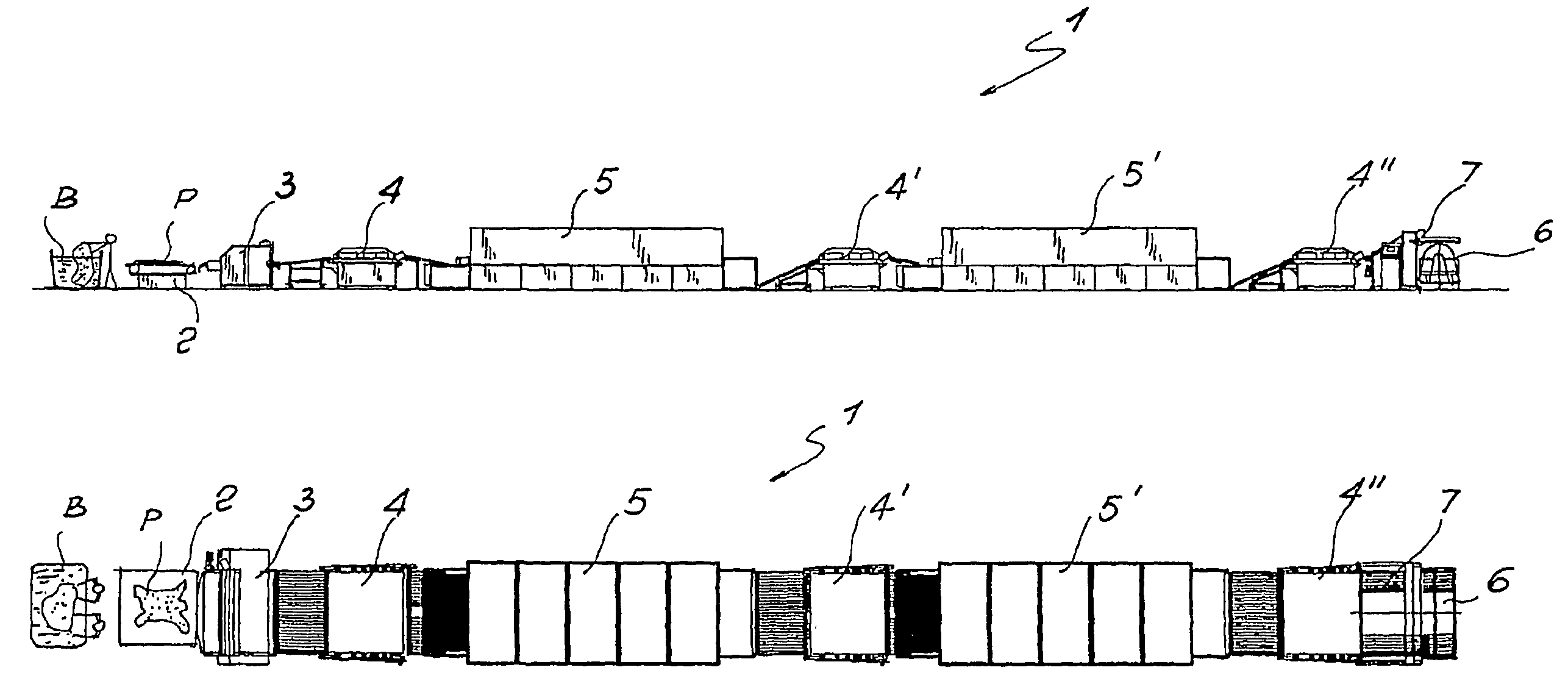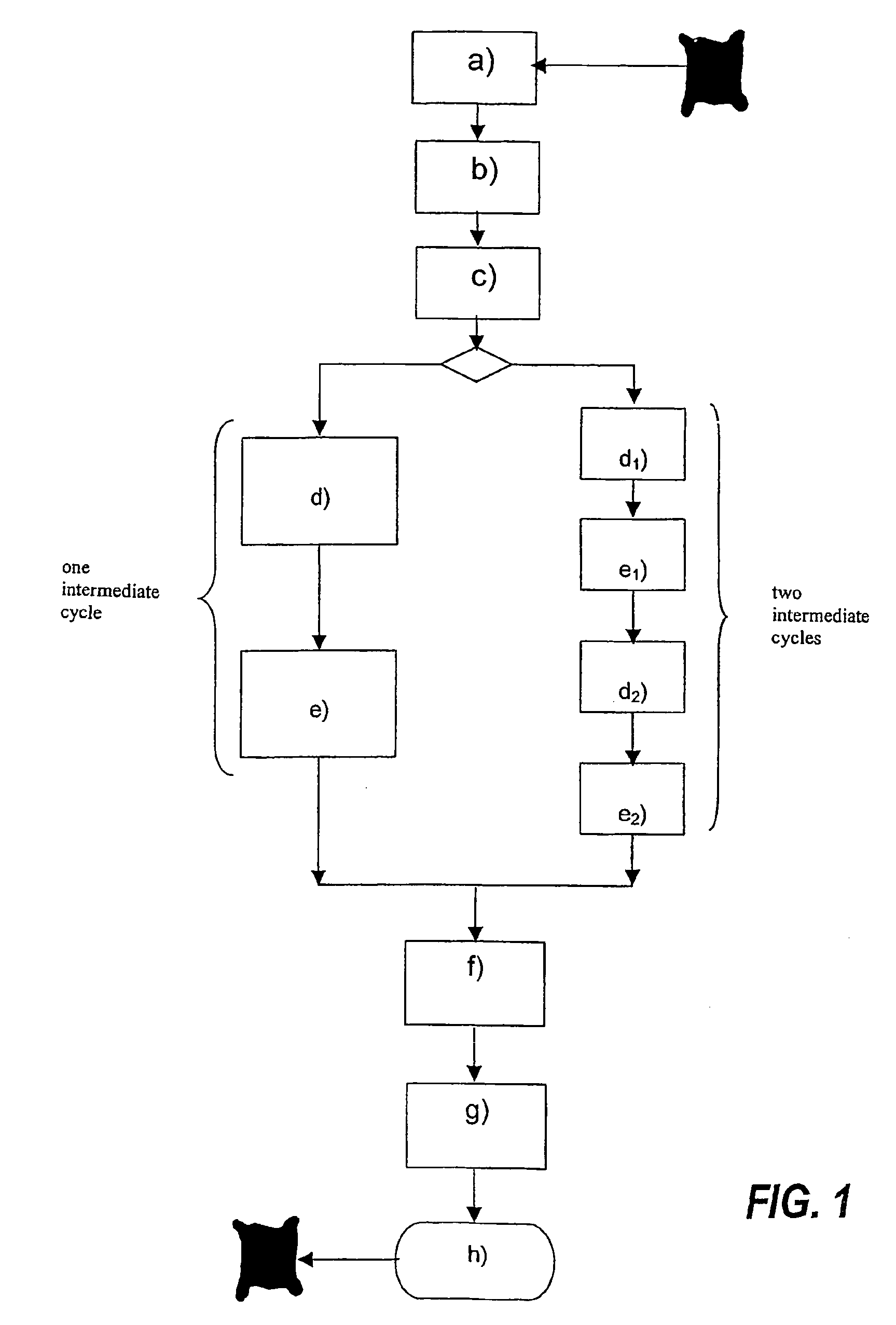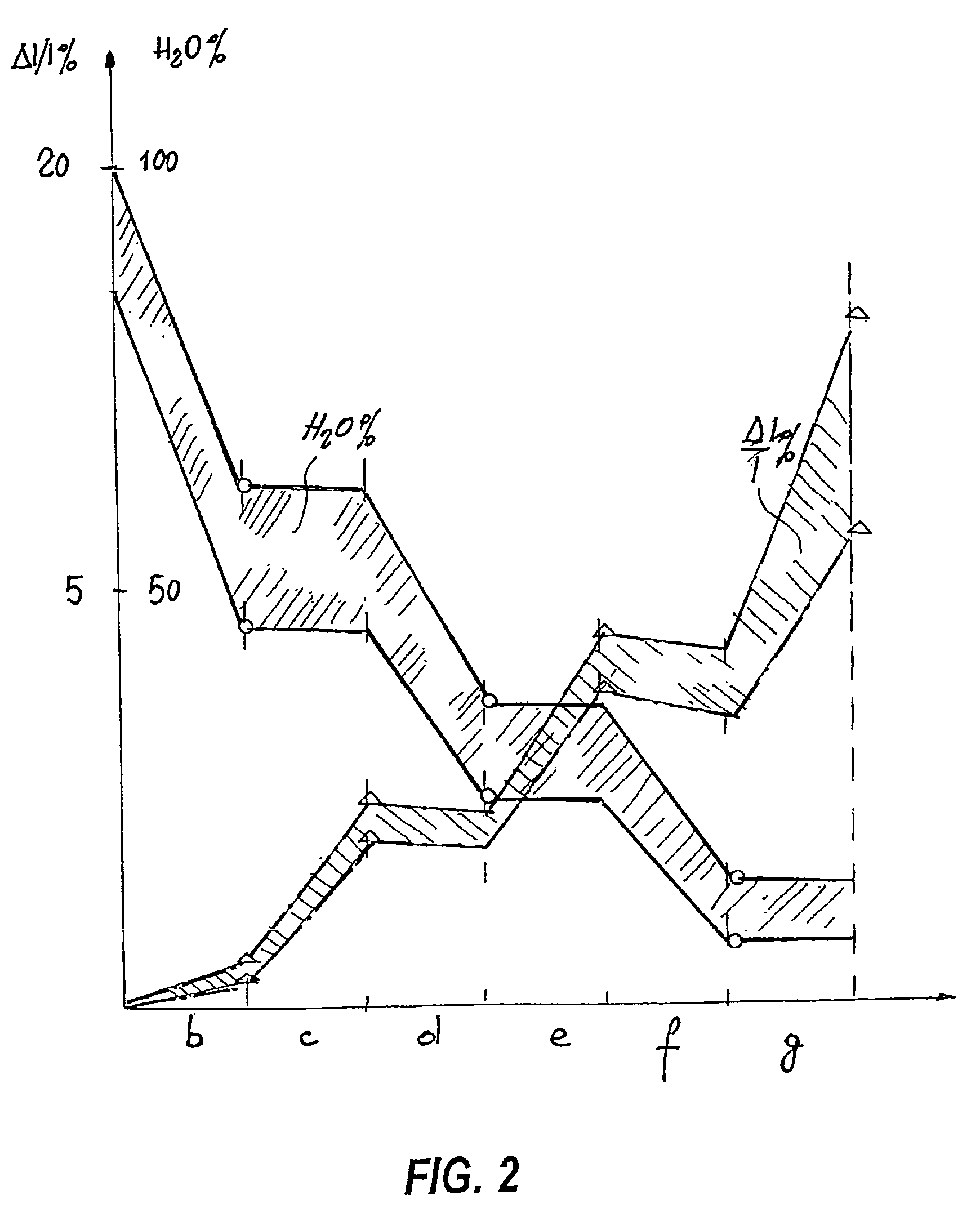Method and apparatus for drying industrial hides
a technology for industrial hides and drying methods, applied in the field of tanning, can solve the problems of reducing the quality of finished products, requiring a large amount of effort on the part of operators, and having a limited effectiveness, and achieve the effects of low processing time, high quality and low production cos
- Summary
- Abstract
- Description
- Claims
- Application Information
AI Technical Summary
Benefits of technology
Problems solved by technology
Method used
Image
Examples
Embodiment Construction
[0033]With reference to the attached drawings, a method and a plant for the continuous and gradual stretching of industrial hides and similar products according to the invention are shown.
[0034]The flow chart shown in FIG. 1 illustrates in schematic form the entire gradual stretching and drying process, with two possible operational variants, i.e. the first with a single intermediate cycle and the second with two intermediate wet stretching and partial drying cycles.
[0035]Obviously, the method may also envisage a greater number of intermediate treatment cycles without thereby departing from the scope of the invention.
[0036]The first part of the method is common to both variants and envisages a first step a) in which the hides P are removed from a tanning or retanning drum or from a dyeing or grease-dressing tank, denoted in schematic form by B, with a relative moisture content of between 85% and 100%.
[0037]In these conditions, the fibres of the hides P are particularly pliable and l...
PUM
| Property | Measurement | Unit |
|---|---|---|
| feed speed | aaaaa | aaaaa |
| feed speed | aaaaa | aaaaa |
| thickness | aaaaa | aaaaa |
Abstract
Description
Claims
Application Information
 Login to View More
Login to View More - R&D
- Intellectual Property
- Life Sciences
- Materials
- Tech Scout
- Unparalleled Data Quality
- Higher Quality Content
- 60% Fewer Hallucinations
Browse by: Latest US Patents, China's latest patents, Technical Efficacy Thesaurus, Application Domain, Technology Topic, Popular Technical Reports.
© 2025 PatSnap. All rights reserved.Legal|Privacy policy|Modern Slavery Act Transparency Statement|Sitemap|About US| Contact US: help@patsnap.com



